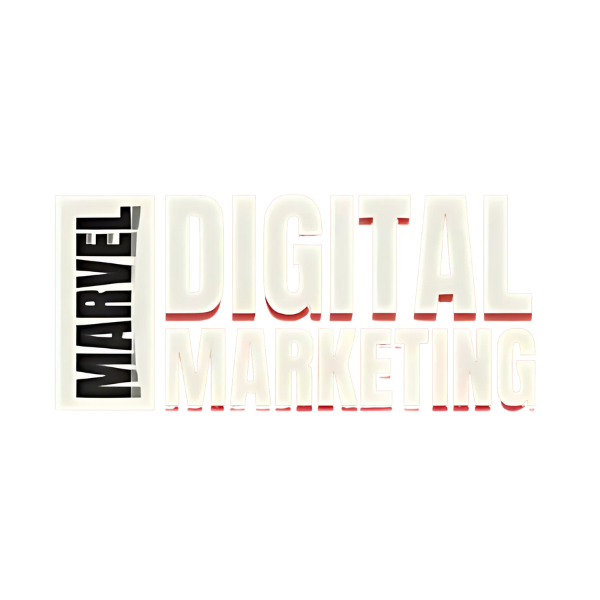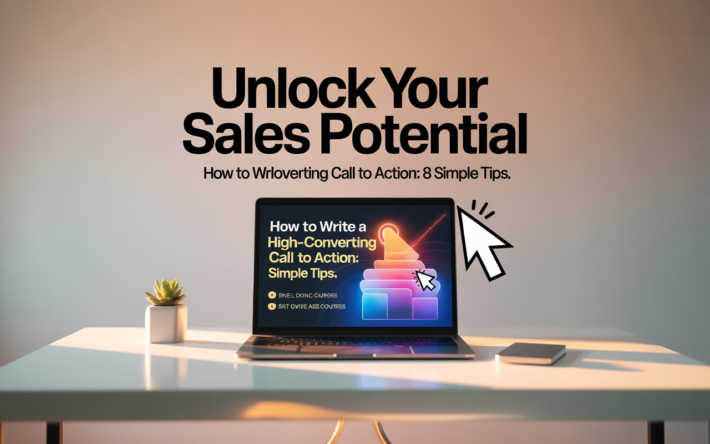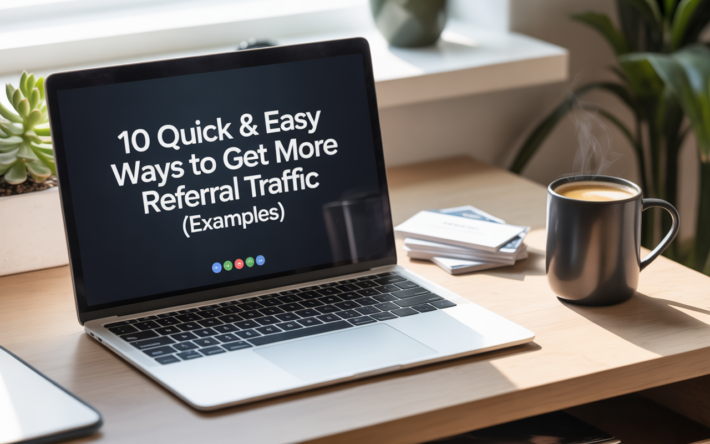What Makes These 13 Persuasive Ads ?

In today’s digital-first world, ads aren’t just selling products—they’re shaping decisions, stirring emotions, and influencing behavior on a massive scale.
From the swipe of a finger to the scroll of a feed, persuasive ads have become powerful tools that blend psychology, creativity, and strategy.
We dive into 13 persuasive ads that didn’t just capture attention—they converted, inspired, and made headlines. We’ll break down the psychological triggers, expert marketing tactics, and emotional storytelling behind each one.
Expect real-world examples backed by data, insights from behavioral science, and proven digital strategies.
Whether you’re a business owner, content creator, or a digital marketing marvel in the making, you’ll walk away with actionable takeaways to craft your own compelling and persuasive ads that truly perform.
Read More : Complete Guide to Google Ads Assets
Defining Persuasive Advertising & Why It Works
So, what makes these 13 persuasive ads stand out? The answer lies in their ability to appeal to the heart, mind, and values of their audience—through emotional, informative, and logical messaging. This three-pronged approach isn’t just effective—it’s foundational.
Ethos (Credibility): When Nike features athletes like Serena Williams, it’s not just branding—it’s trust-building. These figures lend authenticity and credibility that resonates with viewers.
Pathos (Emotion): Think about Google’s “Parisian Love” ad. No product specs, just a heartwarming journey told through search queries. It pulled emotional strings—and pulled in millions of views.
Logos (Logic): Apple’s ads often show clear product benefits—battery life, ecosystem integration, or camera quality—backed by stats and sleek visuals. Logic, made beautiful.
Across all 13 persuasive ads, a balance of these elements creates impact. Emotional connections make us care, credible sources make us believe, and logical arguments help us justify the action.
According to a Nielsen study, emotional ads outperform rational ones by 23% in driving sales—showing just how vital the emotional trigger is. When paired with urgency (limited-time offers, FOMO messaging), it sparks immediate response.
Whether you’re analyzing a global campaign or building your own, these ingredients are what turn ordinary promotions into persuasive ads—and you, into a digital marketing marvel.
Read More: How to Make Unique Content in Today’s AI World
Core Persuasive Techniques Behind the 13 Ads

To understand what makes these 13 persuasive ads so effective, we need to look at the proven psychological and creative techniques they use. Each tactic taps into human behavior and cognitive biases—blending art and strategy in ways that grab attention and drive conversions. Let’s break them down:
1. The Carrot & The Stick
One classic persuasive technique is using positive reinforcement (carrot) versus fear or discomfort (stick).
Dunkin’ emphasizes indulgence, energy, and comfort—the “carrot” that makes you crave coffee and donuts.
CeraVe’s viral campaign with Michael Cera used confusion and satire—leaning into the “stick” by highlighting what could happen if you don’t use dermatologist-recommended skincare.
Both play on desire or discomfort—core motivators in consumer psychology.
2. Scarcity & Urgency
Limited-time offers and FOMO (fear of missing out) are staples in persuasive ads. These tactics trigger our natural aversion to loss.
Spotify x Wonderbox ran a brilliant holiday campaign where users received personalized playlists as gifts—but only for a short time.
Flash sales from brands like Amazon and Zara also masterfully push urgency with countdown timers and low-stock alerts.
According to ConversionXL, scarcity increases conversion rates by up to 226% in some cases.
3. Bandwagon & Social Proof
Humans follow the crowd—it’s wired into us. That’s why social proof is such a powerful tool.
Ads that say “billions served” (McDonald’s), “top-rated by thousands,” or “trending on TikTok” work wonders.
Influencer and celebrity endorsements, like Taylor Swift for Capital One or Cristiano Ronaldo for Nike, amplify trust and relatability.
Nielsen reports 92% of consumers trust recommendations from people they know or admire, making this technique central to modern persuasive ads.
4. USP & Magic Ingredients
A Unique Selling Proposition (USP) is the “why you” behind a brand—and it sticks when it’s simple and bold.
- Domino’s built its empire on a “30-minute delivery guarantee.”
- M&M’s claimed “melts in your mouth, not in your hands.”
- Head & Shoulders leveraged the “clinically proven anti-dandruff” formula as its magic ingredient.
When the message is clear, consistent, and different—it converts.
5. Association & Transfer
This technique links your product to something the audience already desires—luxury, power, confidence.
- Old Spice used absurd humor and “snob appeal” to rebrand itself for a younger audience. The viral “Smell Like a Man” campaign connected scent with status.
It’s emotional branding at its peak.
6. Humor & Creativity
Humor disarms, delights, and makes messages memorable.
- Volkswagen’s “Think Small” campaign used irony and minimalism to reposition compact cars in an era of big engines.
- Old Spice again stands out for using weird, bold humor to engage and go viral.
Funny, unexpected visuals make persuasive ads shareable.
7. Storytelling & Emotional Narratives
Stories trigger empathy and make ads relatable.
- Honda’s “Cog” ad used a Rube Goldberg machine to tell a tale of precision engineering—without a single spoken word.
- The Zimbabwe Trillion-Dollar Note campaign by The Economist used real hyperinflation currency to provoke thought and spark conversation about economic collapse.
These ads don’t sell—they connect.
8. Repetition & Reinforcement
Catchy slogans and brand consistency burn a message into memory.
- Kit Kat’s “Have a Break.”
- Nike’s “Just Do It.”
- Coca-Cola’s iconic use of red, script fonts, and happiness-focused messaging.
Repetition = recognition. Recognition = trust.
9. Logical Appeals & Data
Not all persuasion is emotional—facts still matter.
- Tech ads from Apple and Samsung focus on camera resolution, speed, and battery stats.
- Grammarly and Duolingo use comparison charts and user success stories to build trust with logic.
This works especially well in high-involvement purchases like gadgets, software, or financial products.
10. Monroe’s Motivated Sequence
This structured five-step method is a hidden weapon in persuasive ad writing:
- Attention – Grab them with a hook.
- Need – Show the problem.
- Satisfaction – Present the solution.
- Visualization – Help them imagine the outcome.
- Action – Tell them what to do next.
Ads that use this formula (like many political campaigns or health PSAs) lead viewers down a carefully crafted persuasive path.
These techniques are the engine behind persuasive ads. They’re not just tactics—they’re psychology in action. And when you learn to spot or use them, you’re well on your way to becoming a true digital marketing marvel.
Read More : 6 Smart Ways to Reduce Google Ads CPC & Maximize Budget
What Makes These 13 Persuasive Ads Effective?
Let’s break down what makes these 13 persuasive ads so impactful. Each of these campaigns didn’t just grab attention—they changed perception, boosted sales, and earned a permanent place in marketing history.
1. Spotify Wrapped
Personalized year-in-review playlists, tailored to each user.
Technique(s): Social proof, emotional appeal, FOMO.
Why It Persuades:
Wrapped taps into personal identity and community. Seeing your favorite songs compared to global trends combines Pathos and Bandwagon Effect, while its limited availability fuels urgency.
2. Old Spice – “The Man Your Man Could Smell Like”
A humorous, fast-talking man sells body wash with absurd transitions and confidence.
Technique(s): Humor, association, snob appeal.
Why It Persuades:
Uses Association & Transfer—linking Old Spice to attractiveness and masculinity—with a dose of creativity that made it wildly viral.
3. Volkswagen Beetle – “Think Small”
Minimalist print ad that celebrated the small size of the Beetle in an era obsessed with big cars.
Technique(s): Logical appeal, USP, repetition.
Why It Persuades:
Turns a perceived weakness into a USP, using Logos and clean design to flip industry expectations.
4. Honda – “Cog”
A Rube Goldberg machine built from Honda parts to show off engineering precision.
Technique(s): Storytelling, logical appeal, visual creativity.
Why It Persuades:
No words needed—Monroe’s Motivated Sequence plays out visually. Engages with curiosity, builds satisfaction, and ends with product confidence.
5. Coca-Cola – “Share a Coke”
Bottles printed with common names, encouraging people to find and gift them.
Technique(s): Personalization, emotional appeal, social proof.
Why It Persuades:
Created a Pathos-driven emotional connection, turning a product into a gift. Sales in the U.S. increased by over 2%—a rare jump for a global giant.
6. Domino’s – 30-Minute Delivery Guarantee
Promise to deliver in under 30 minutes or it’s free.
Technique(s): USP, urgency, logical appeal.
Why It Persuades:
Clear and bold value proposition that reduced decision friction—“I’ll get it fast or free.” A mix of Logos and scarcity.
7. Head & Shoulders – “Clinically Proven”
Focused on being the #1 anti-dandruff shampoo recommended by doctors.
Technique(s): Credibility, logical appeal, magic ingredient.
Why It Persuades:
Combines Ethos (medical authority) and Logos (clinical proof). Sales surged as trust in the product grew.
8. M&M’s – “Melts in Your Mouth, Not in Your Hands”
Focus on product’s unique coating that keeps chocolate mess-free.
Technique(s): USP, repetition, logical appeal.
Why It Persuades:
Repeated tagline communicated a clear, functional benefit, reinforcing its unique selling point.
9. Wonderbox x Spotify – Holiday Gift Campaign
Spotify offered gift boxes with a free trial, only during Christmas.
Technique(s): Scarcity, seasonal urgency, personalized storytelling.
Why It Persuades:
Limited-time availability created FOMO and tied to emotional gifting moments, using Pathos + Urgency effectively.
10. Google – “Parisian Love”
A love story told entirely through Google search queries.
Technique(s): Storytelling, emotional narrative, subtle brand integration.
Why It Persuades:
Stirs emotion through Pathos without showing a single face. Reinforces how Google is woven into everyday life moments.
11. Nike – “Just Do It”
Consistent slogan linked to bold stories of athletes overcoming odds.
Technique(s): Repetition, emotional appeal, social proof.
Why It Persuades:
Built long-term brand equity using Monroe’s Motivated Sequence: inspire → relate → act. It’s iconic because it speaks to universal ambition.
12. Economist – Zimbabwe Trillion-Dollar Campaign
Distributed real trillion-dollar notes to highlight economic failure.
Technique(s): Shock factor, logical appeal, scarcity.
Why It Persuades:
Combines Logos and disruption to provoke thought, aligned with the Economist’s positioning as an intellectual publication.
13. Apple – iPhone Launches
Product reveal events with focus on features, design, and exclusivity.
Technique(s): Scarcity, USP, logical appeal, social proof.
Why It Persuades:
Combines data (tech specs) with emotional design storytelling. Scarcity through pre-orders and queues adds desire.
Each of these persuasive ads leverages specific human triggers—from trust to fear of missing out, from logic to laughter. Whether you’re building a small campaign or dreaming big, mastering these techniques positions you as a true digital marketing marvel—ready to create campaigns that convert.
Read More : Best 5 Digital Marketing Companies in Delhi | Digital Marketing Marvel
How to Craft Persuasive Ads: A Step-by-Step Guide

Now that we’ve explored what makes these 13 persuasive ads so successful, let’s turn insight into action. Whether you’re a startup founder, social media manager, or a growing digital marketing marvel, here’s your clear roadmap to creating your own persuasive ads that truly convert:
1. Understand Your Audience & Trigger Emotions
Start with empathy. Who are you speaking to? What keeps them up at night? What brings them joy?
- Define their pain points: What problems does your product solve?
- Identify emotional triggers: Use joy, relief, fear, belonging, pride, or curiosity.
Use surveys, customer reviews, and social listening to find language that resonates.
2. Choose Your Primary Persuasion Technique
Pick the technique that best suits your brand and campaign goal. Use this quick flow:
- Looking to delight? → Use Humor or Creativity
- Solving a pain point? → Use The Stick
- Highlighting popularity? → Use Social Proof / Bandwagon
- Promoting a time-bound offer? → Use Scarcity / Urgency
- Demonstrating trust? → Use Credibility / Ethos
You can combine techniques—but don’t overcomplicate the message.
3. Build a Compelling Narrative
Storytelling makes information memorable and emotional. Use Monroe’s Motivated Sequence for structure:
- Attention – Start with a strong hook or visual.
- Need – Present the problem.
- Satisfaction – Introduce your solution.
- Visualization – Show them life after solving the problem.
Action – Prompt them to act now.
Ads that tell a story are 22x more memorable than those that don’t (Stanford research).
4. Introduce a Strong USP (Unique Selling Proposition)
Your message should answer: Why you and not someone else?
- Keep it simple: “30-minute delivery.” “No.1 dermatologist-recommended.” “Melts in your mouth.”
- Avoid generic claims. Instead, anchor your USP in real product benefits.
If your USP can be said by any competitor, it’s not unique enough.
5. Add Credibility & Social Proof
Build trust with what others are saying or doing:
- Use testimonials: Real users = real results.
- Show stats: “Rated 4.9/5 by 10,000+ users.”
- Feature authority: Endorsements from experts, celebrities, or influencers.
88% of consumers trust online reviews as much as personal recommendations (BrightLocal).
6. Inject Urgency or Scarcity Where Needed
Encourage quick decisions with time or quantity limits:
- “Only 3 left in stock!”
- “Offer ends at midnight!”
- “Limited early bird spots remaining.”
Fear of missing out (FOMO) is a powerful emotional lever—especially in digital ads.
7. Make It Visually & Mentally Memorable
Don’t just say it—show it.
- Use bold visuals, animations, or humor to stand out.
- Repeat your core message (slogan or tagline) across touchpoints.
- Think outside the box—unexpected ads stick.
Old Spice’s fast-paced absurd visuals helped boost brand sales by 125% in the first three months.
8. Close with a Clear CTA
Every persuasive ad needs a finish line. Tell your audience what to do next:
“Shop Now”
“Book a Free Demo”
“Subscribe Today”
“Try Risk-Free for 7 Days”
Keep it short, actionable, and aligned with the campaign goal.
With these 8 steps, you’re not just making ads—you’re crafting behavior-changing, memory-making, persuasive ads. Master them, and you’re on your way to becoming a true digital marketing marvel—one conversion at a time.
Read More : Best Digital Marketing and Advertising Companies in Dwarka
Conclusion
It’s not just clever visuals or catchy slogans—it’s the smart, strategic use of emotion, credibility, and clarity. These campaigns tapped into our fears, desires, and dreams with precision.
Whether it was Coca-Cola personalizing bottles, Nike inspiring athletes, or Spotify using your own data to tell a story—each ad succeeded by aligning a clear USP with a human emotion.
Let’s recap the core takeaways:
- Emotional resonance drives connection and recall.
- Persuasion techniques like scarcity, social proof, and storytelling nudge us toward action.
- A structured approach (like Monroe’s Motivated Sequence) ensures every message has impact.
- A compelling USP and crystal-clear CTA seal the deal.
You don’t need a global budget to apply these lessons. With insight, creativity, and consistency, you can build your own persuasive ads that connect, convert, and grow your brand.
Be bold. Be strategic. Become a digital marketing marvel.
FAQ
1. What are the most persuasive ad techniques in these 13 examples?
The most persuasive techniques in these 13 persuasive ads include emotional appeal, scarcity and urgency, social proof, unique selling propositions (USP), and storytelling.
Each ad strategically uses one or more of these to influence viewer behavior—like Coca-Cola’s emotional personalization or Domino’s 30-minute delivery USP. These methods tap into psychology and human bias, making the messaging stick and driving conversion.
2. Why do emotional appeals work so well?
Emotional appeals work because they create a personal connection with the audience. Ads like Google’s “Parisian Love” or Spotify Wrapped trigger feelings of love, nostalgia, and identity—making the message more relatable and memorable.
Studies show that emotionally charged content is 2x more likely to be shared and can drive significantly higher engagement and purchase intent compared to rational messages.
3. How can I measure if my ad is persuasive?
To measure if your ad is persuasive, track key performance indicators (KPIs) such as:
- Click-through rate (CTR)
- Conversion rate
- Engagement (likes, shares, comments)
- Bounce rate
- Time spent on page
You can also A/B test different persuasion techniques to see which version performs best. High-performing persuasive ads typically show a noticeable uptick in user interaction and decision-making.


